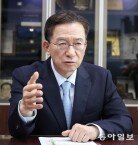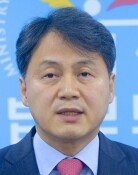Inter-Korean summit in Pyonyang
Inter-Korean summit in Pyonyang
Posted August. 14, 2018 07:40,
Updated August. 14, 2018 07:40
A meeting between high-level officials of the two Koreas held on Monday at Panmunjom, where the two sides agreed to hold a third inter-Korean summit in September in Pyongyang. On one hand, it has been somewhat of an expected result as the two Koreas’ leaders during the April 27 summit at Panmunjom committed to another summit this fall. On the other hand, here is an unexpected aspect -- a less-than-two-hour-long discussion and swift decision making. Prior to the meeting, the South Korean government intended to ensure that a next inter-Korean summit occurs at some point between late August and early September, with the aim of realizing North Korean leader Kim Jong Un’s joining of the United Nations General Assembly in September, which, however, has ended up being impossible.
Ri Son Kwon, North Korean Chairman of the Committee for the Peaceful Reunification of the Fatherland, maintained just before the meeting was finished that a bunch of issues exist regarding inter-Korean exchange and cooperation such as the reunion of separated families and cooperation on railroad, road infrastructure and forestation. "The first thing to do is to resolve the issues that have been raised during the inter-Korean summits and on other occasions of contacts," Ri said. "With them left unaddressed, unexpected problems could arise while efforts to resolve the existing issues could hit some snags." His remarks are interpreted as a warning that the following events including the next inter-Korean summit will not proceed smoothly, if the South does not show "sincerity" in a way that ensures inter-Korean economic cooperation and lifts some relevant North Korea sanctions. Prior to the high-level meeting, the North even criticized the South for merely doing calculations without producing any tangible results.
South Korean President Moon Jae-in must have pushed ahead with a third summit because the circumstances on the Korean Peninsula have been unfolding somewhat differently from what he expected at the April 27 summit. It is speculated that President Moon attempts to meet Mr. Kim to spur dialogue, which has been stalled since a landmark U.S.-North Korea summit in Singapore. Also, Moon may have aspired to lead Kim to the U.N. General Assembly, which can facilitate the North’s change to a normal state, and strengthen binding force of the denuclearization declaration. However, given the North’s attitude, it is seemed that it will requests more of the South’s "sincerity," driving a wedge between the United States and the South, and make slight concessions as if they were generous during the summit, thus leading the change to mood for dialogue.
It will be the third occasion to have an inter-Korean summit in Pyongyang, following those in 2000 and 2007. Diplomatically, it is appropriate to visit the other party’s country in turn. Nevertheless, there is no reason to say to another inter-Korean summit if the South can lead the North to give up on a war-ending declaration as a precondition, and to realize denuclearization. However, the South has to be cautious about any side effects such as a narrow wriggle room in diplomatic relations, which can occur if it opens a summit only for show, failing to narrow the gap with the North. Seoul has to set denuclearization as a priority for the summit and use composure and cool-headedness while preparing.
Headline News
- Med professors announce intention to leave hospitals starting Thursday
- Bridge honoring Sgt. Moon Jae-sik unveiled in Pennsylvania
- Chief of Staff Chung tells presidential secretaries to stay away from politics
- US FTC bans noncompete agreements
- N. Korea launches cyberattacks on S. Korea's defense companies







